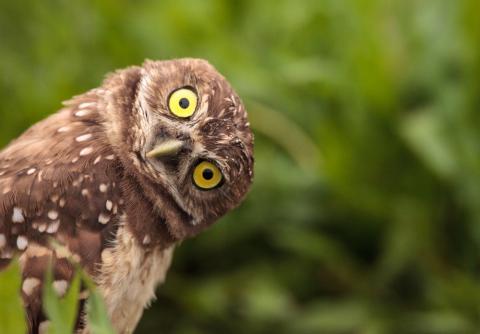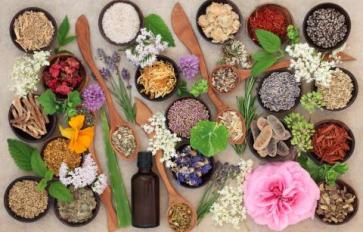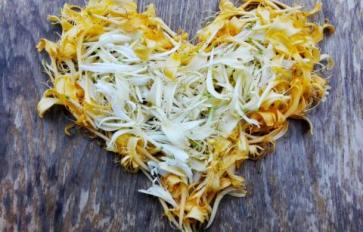
Have a garden but hate dealing with pests? Birds can help out! Not only are these adorable creatures fun to watch and look at, they're also great for getting rid of insects and vermin that can damage your plants. Here are 10 beneficial birds you want in your backyard, and how to attract them.
Bluebirds
These colorful cute birds aren’t just desirable for their stunning plumage and harmonious voices. They eat tons of insects that would otherwise be deemed pests to you. Bluebirds are insectivorous after all—they eat grasshoppers, beetles, weevils, caterpillars, and other insects that would probably wreck your garden. Attracting them will help provide some amazing all-natural pest control without the added chemicals.
- To attract a bluebird, make sure you’re not using any insecticides in your garden so the poor things don’t get poisoned.
- They mainly feed on insects, but they do eat a wide variety of berries as well. Consider planting some sumac, elderberry, or holly in your yard to create a bluebird paradise.
- You’ll also want to have a water source available: ideally a low, wide basin with 1 to 2 inches of water. Moving water with a bubbler or fountain will also attract their attention more quickly than glittering sparkles or splashing noises.
- As far as shelter goes, bluebirds tend to prefer mature, widely spaced trees and are less likely to visit a backyard with dense, thicket-like areas of foliage. It’s ideal if you preserve a few mature trees and opt for low groundcover surrounding broad, open, grassy areas to provide these ground feeding birds security while foraging.
Owls
Got a surplus of mice, gophers, voles, shrews, or other small rodents running around your yard? Well guess what? That’s like ringing the dinner bell for an owl. They’ll help you control rodent population happily, though they may be initially a bit tricky to attract. Because they're nocturnal, they’re less of a threat to any other birds that visit your yard during the day. They’re wonderful raptors to have in your yard and truly something to watch.
- To attract owls to your yard, consider leaving a portion of your grass uncut, adding a brush pile, and leaving seed on the ground. This will encourage mice to visit your yard, in turn making your yard more owl friendly as well.
- If you already have a mice problem, make sure to avoid using poison or traps to eliminate them, and let owls take care of the problem instead.
- Owls aren’t frequent visitors to bird baths, however in hotter climates and during the summer, owls may visit slightly larger, deeper birdbaths to drink or bathe. Place the water source in a quiet, secluded area. They tend to get most of their fluid intake from their diet, though.
- Last but not least, owls prefer somewhat dense, mature trees with good trunks to roost during the day. Deciduous and coniferous trees are perfect, assuming they’re a good size. You can also consider leaving a large nest box for them to encourage nesting—make sure it’s positioned 10 to 20 feet above the ground in a large tree.
Chickadees
These little cuties are voracious insect-eaters. Particular favorites for chickadees include grubs and caterpillars. These birds have larger broods, so that means the parents will quickly hunt hundreds of caterpillars for their younglings. One nest can typically lay 5 to 8 eggs, but sometimes nests consist of 10 to 13 eggs. That’s a lot of mouths to feed! So, if you have a caterpillar infestation, it’s like ringing the dinner bell for these cute birds. It’s not hard to attract chickadees to your backyard. They eat a wide variety of foods, including insects, fruit, nuts and seeds.
- Try planting some flowering trees or berry producing shrubs that will also attract insects.
- Make sure you avoid using pesticides and insecticides.
- Chickadees will also visit bird feeders, so make sure to leave some hulled sunflower seeds, black oil sunflower seeds, and shelled peanuts. You can also offer suet and peanut butter on a tray, tube, or hopper feeder.
- Even growing sunflowers or other seed-bearing flowers is another way to attract these birds. They’ll happily cling to the flower heads as they feed.
- You can also smear peanut butter or soft suet on the bark of a tree or fence for chickpeas to enjoy.
- They’ll definitely visit birdbaths for drinking and bathing, but because they’re small, shallow baths are a must. If the basin is too deep, consider adding a smaller dish inside it or scattering river rocks or gravel along the bottom to make it a better depth.
- Deciduous and coniferous trees provide great shelter for these birds, as do areas of shrubbery.
Woodpeckers
If you’ve got wood-boring insect problems, woodpeckers are there to help. They’ll happily drill into bark and search for aphids, beetles, millipedes, and other annoying insects. These tenacious, determined birds won’t stop until they’ve devoured them all!
- Attracting woodpeckers isn’t too hard. They’ll eat insects, nuts, berries, sap, and other natural foods. They also enjoy suet, peanut butter, mealworms, black oil sunflower seeds, and peanuts offered at a supplemental feeder. Make sure to choose an upright feeder that will support these birds’ comfortable feeding posture.
- Position feeders near mature trees where they’ll naturally forage for food on their own. Make sure to leave some dead trees, stumps, and snags available for them to find a good source of insects and grubs.
- Don’t use pesticides and insecticides.
- Make sure to plant trees that will produce nuts and berries.
- They prefer visiting more natural bird baths rather than gaudy ones. A ground bird bath with a dripper may help attract their attention. Make sure it’s positioned in a quiet, shaded area so these shy birds won’t be intimidated by other birds visiting the bath constantly. Also make sure the bath itself is shallow.
- Mature deciduous and coniferous trees are the best shelters for woodpeckers as well. They really love oak and pine trees for both roosting and feeding. Planting trees a bit closer together will help create an area that these birds feel more secure in as well.
Hummingbirds
Hummingbirds are always welcome visitors to anyone’s yard. These birds aren’t just pollinators that help your garden thrive though. They will also keep gnat and other insect populations down. While feeding their young, hummingbirds will give their babies more insects to build strong bones and beaks. It’s not uncommon for them to use spider silk to build their nests, and when they do this, they eat the insects and baby spiders that are found in it.
- To attract hummingbirds, make sure you’re planting all the right flowers. Hummingbirds love bee balm, zinnias, bleeding hearts, petunias, coneflowers, butterfly bush, trumpet vine, and cardinal flower, to name just a few.
- You can also put hummingbird feeders by these flowers and fill them with sugar water. You can make some sugar water easily by combining one part refined table sugar to 4 parts warm water. Don’t use red dye in your sugar water—it can have adverse effects on hummingbirds. Also, make sure to replace the sugar water before it spoils. It’s a good idea to have several feeders around the yard too, because hummingbirds can get quite territorial of their area.
- Also, consider installing a drip fountain or small misting device to attract hummingbirds. They won’t visit your traditional bird bath.
- Hummingbirds prefer small deciduous trees and dense shrubs to build nests and raise their family.
Goldfinches
Got weeds? Beautiful goldfinches can help you with that! These seed-loving birds will gladly eat weed seeds: They’ll literally pluck seeds right off stalks! Not to mention they’ll also forage on the ground after fallen seeds too. The American goldfinches and Lesser goldfinches both eat a huge amount of seeds, and the more of these birds you have in your yard, the less weeds you’ll have to deal with.
- To attract goldfinches, be aware they’re granivorous birds, meaning they eat primarily, though not exclusively, seeds and grain. This means planting seed bearing flowers, such as coneflowers and sunflowers (among other native blooms) are best for encouraging goldfinches to visit your garden.
- You can also use feeders as long as they offer sunflower seed hearts or chips as well as Nyjer. You can’t go wrong with mesh-style feeders, but tube feeders or tray feeders are also good choices.
- Goldfinches will also frequent the bird bath for a quick sip or a bath, but it’s best if the basin is a shallow one that easily allows smaller birds to use it. You can also use a dripper or fountain in the bath to attract goldfinches with splashing sounds.
- Dense trees and shrubs are the goldfinches’ preferred shelter. Thorny bushes will provide another layer of protection the goldfinch prefers. Having a mix of coniferous and deciduous trees and shrubs is a good idea.
Hawks
Ever see a hawk in your yard? It might startle you to see one, but they’re honestly a welcome sight because they’ll make a meal out of unwanted mice, snakes, squirrels, large insects, and other prey. Just be aware that hawks will attack other birds too. It might be wise to take a few steps to protect backyard birds from hawks—like providing ample shelter for your feathered friends, avoiding ground feeders, and using shield feeders so the hawks can’t see available prey from up above.
- To attract hawks to your yard, be aware that all raptors are carnivorous. The best way to supply them with prey is to attract birds with a good feeding station and other natural foods. Whenever the birds congregate, a raptor will eventually pop by. Insects and rodents are also common prey, so if you already have a problem with those pests, a hawk will pop by at some point. However, it’s advised to never deliberately feed hawks. This means it’s not okay to bait raptors with pet mice, raw meat, or other treats. If there’s a natural food source available, the hawks will find it.
- Hawks will also visit bird baths to cool off or bathe, particularly during summer months. However, the bird baths should be larger and deeper to accommodate raptors. A sturdy, concrete bird bath would probably be best.
- For shelter, raptors favor large, stable perches they can easily spot prey in. They also like sheltered areas where they can roost after a large meal when they need to digest. Large deciduous or coniferous trees will do nicely, along with snags. Raptors may even perch on deck railings, fences, or roofs of sheds, garages, and houses.
Tanagers
No one likes dealing with stinging insects. Let tanagers help you! These birds love to scoop up pesky stinging insects, especially wasps. Who wouldn’t want that, right? They’ve (amazingly) evolved to remove the dangerous stingers before they eat various insects. Tanagers stick around all summer which is when wasp and hornet populations are at their peak.
- To attract tanagers, you should definitely have an insect-friendly yard. Make sure you don’t use any pesticides or insecticides either.
- They’re experts at harvesting bugs from leaves, branches, and trunks. Consider planting cherry, plum, and evergreen trees in your yard, as these trees provide tanagers with a big food source as well as nesting habitat. You should also consider planting berry bushes, as they do like to occasionally feast on their sweet fruit, serviceberries being one of their favorites.
- Tanagers also like birdbaths, so consider having a shallow one with a pedestal, making it easier for these small birds to enjoy a drink and dip.
- As far as shelter goes, tanagers tend to stay high in treetops in deciduous forests, so having several deciduous trees in your garden can help. They especially love oaks for shelter.
Nuthatches
You’ve got to love tree-creeping nuthatches: They’re amazing at protecting landscaping trees and orchards. That’s because they forage along the trunk for ants, beetles, moth eggs, and caterpillars. So if you’re looking to protect your trees, nuthatches could be your solution!
- To attract nuthatches, you must first consider they’re primarily insectivorous, meaning they largely feast on insects. However, they will visit birdfeeders for suet, sunflower seeds, nuts, mealworms, and peanut butter. You’ll probably see them most during the fall and winter.
- Growing sunflowers or adding trees that provide nuts like beechnuts, hazelnuts, acorns or hickory nuts is a great way to attract nuthatches as well. Evergreen trees are favorites among nuthatches.
- Just make sure you aren’t using any insecticides so they can eat all the protein-rich insects they want.
- Birdbaths should be shallow to attract nuthatches, and they really love moving water from wigglers, fountains, drippers, or misters. Consider getting a heated bird bath, since these birds are seen most often in fall and winter, and you’ll need to make sure the water doesn’t freeze over.
- Nuthatches like to use cavities, so offering a bird roost box can give these small birds a safe place to rest. Leave dead trees intact so the birds can take advantage of any natural cavities as well. For warmer nights, deciduous and coniferous trees can lend adequate shelter, especially if they’re taller and more mature trees.
Wrens
Wrens are so energetic and fun to watch. They’re even more lovable for their taste in eating unwanted insects. Wrens tend to forage closer to the ground, so they’ll happily eat ants, snails, beetles, grubs, and caterpillars for you. Having wrens around is a great way to minimize the insects in your yard without using nasty chemicals.
- To attract wrens, you should know their main diet consists of insects, but they will sample berries as well. Plant some native berry producing shrubs to lure them in.
- Avoid removing spider webs where these birds forage because they will happily eat the bugs for you. Leaving leaf litter intact will encourage insects that wrens love to feast on. Wrens will also gobble down snails and slugs which are often deemed pests in gardens.
- At feeders, you can leave mealworms, peanut butter, suet and peanut hearts for them to sample. Tray or platform feeders work best for these birds. You can also smear suet or peanut butter directly onto a tree trunk or branch.
- Try keeping multiple water sources around than one single birdbath. Birdbath fountains or moving, splashing sources of water will attract them. Just make sure the birdbath you choose is shallow enough to accompany their small bodies.
- Wrens also prefer relatively dense cover and tend to stay low in thickets. Make sure there are several dense, shrubby areas in your yard they can find shelter in easily. Leaving low branches intact on small trees and shrubs is also a good idea. You can also create a brush pile or leave a bird roost box for shelter to use on cold nights.
For more tips and tricks to lure birds into your backyard, check out how to attract birds to your feeder, how to attract birds in the winter and how to build a bird friendly backyard.








